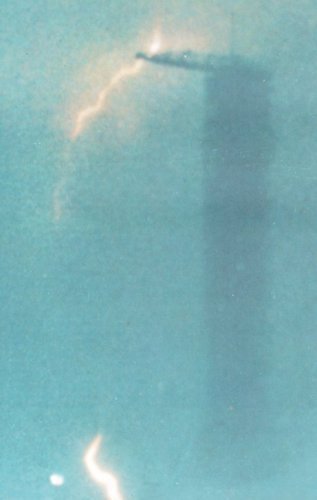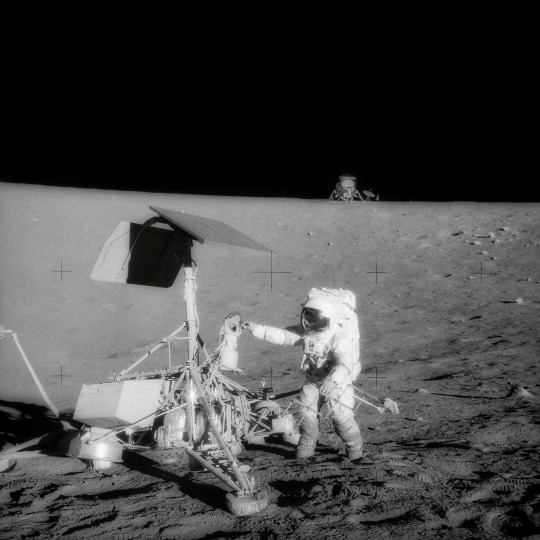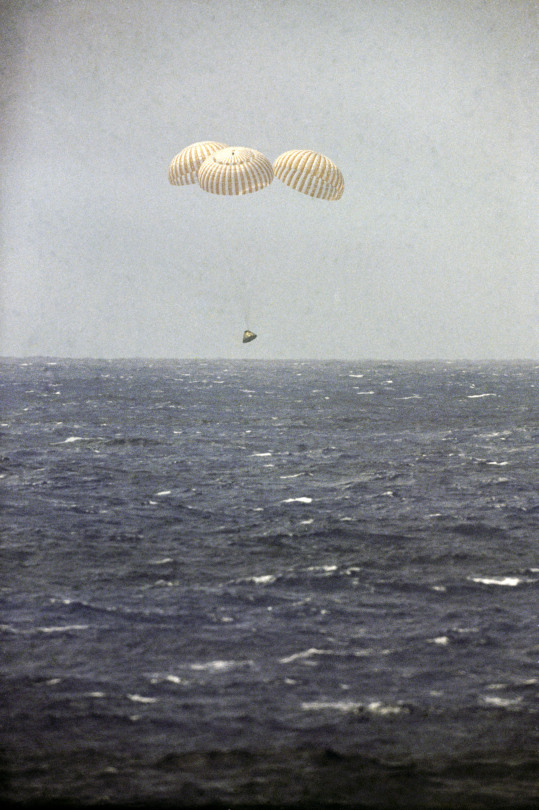Launched less than four months after Apollo 11 put the first astronauts on the Moon, Apollo 12 was more than a simple encore. After being struck by lightning on launch – to no lasting damage, fortunately – Apollo 12 headed for a rendezvous with a spacecraft that was already on the Moon. The mission would expand the techniques used to explore the Moon and show the coordination between robotic and human exploration, both of which continue today as we get return to return astronauts to the Moon by 2024.
Launch Day

Apollo 12 lifted off at 11:22 a.m. EST, Nov. 14, 1969, from our Kennedy Space Center. Aboard the Apollo 12 spacecraft were astronauts Charles Conrad Jr., commander; Richard F. Gordon Jr., command module pilot; and Alan L. Bean, lunar module pilot.
Barely 40 seconds after liftoff, lightning struck the spacecraft. Conrad alerted Houston that the crew had lost telemetry and other data from the mission computers. As the Saturn V engines continued to push the capsule to orbit, ground controllers worked out a solution, restarting some electrical systems, and Apollo 12 headed toward the Moon.

Cameras at the Kennedy Space Center captured this image of the same lightning bolt that struck Apollo 12 striking the mobile platform used for the launch.
On the Moon
Apollo 12 landed on the Moon on Nov. 19, and on the second moonwalk Conrad and Bean walked approximately 200 yards to the Surveyor 3 spacecraft. One of seven Surveyor spacecraft sent to land on the Moon and to gather data on the best way to land humans there, Surveyor 3 had been on the Moon for more than two years, exposed to cosmic radiation and the vacuum of space. Scientists on the ground wanted to recover parts of the spacecraft to see what effects the environment had had on it.

Apollo 12 commander Pete Conrad examines the Surveyor 3 spacecraft before removing its camera and other pieces for return to Earth. In the background is the lunar module that landed Conrad and lunar module pilot Alan Bean on the Moon.
Splashdown

Apollo 12 splashed down on Nov. 24. When Artemis returns astronauts to the Moon in 2024, it will be building on Apollo 12 as much as any of the other missions. Just as Apollo 12 had to maneuver off the standard “free return” trajectory to reach its landing site near Surveyor, Artemis missions will take advantage of the Gateway to visit a variety of lunar locations. The complementary work of Surveyor and Apollo – a robotic mission preparing the way for a crewed mission; that crewed mission going back to the robotic mission to learn more from it – prefigures how Artemis will take advantage of commercial lunar landers and other programs to make lunar exploration sustainable over the long term.
Make sure to follow us on Tumblr for your regular dose of space: http://nasa.tumblr.com.





Комментариев нет:
Отправить комментарий